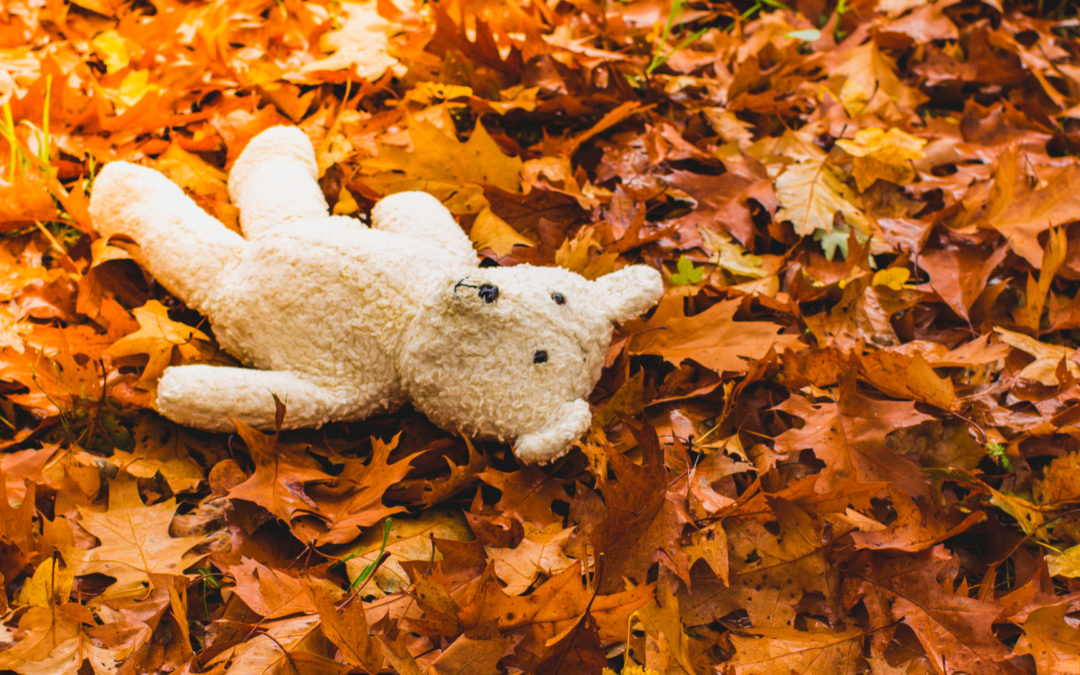CHILD POVERTY REALITY CHECK
I have seen poverty over my life, from the ghettos of Detroit and Los Angeles to the slums of Tijuana and to the homeless of Seattle. But when I moved to the Washington Coast two years ago, I discovered a hidden face of impoverished America. Children of poor, disenfranchised small-town families and Native American children on and off reservations.
It’s similar to what you read about in Hillbilly Elegy about the poor Americans in the Appalachian region, where once-booming industries, like coal mining, collapsed or moved away and nothing came in its place. In the Northwest, those industries were fishing and logging. But the result was the same. Families didn’t move when the jobs departed, they just fell into a multi-generational cycle of poverty and despair.
According to official government stats, some 20 percent of children in the United States live in poverty. That’s more than 16 million children or one in every five. What does that look like? If there are thirty kids in a classroom, then six of those children probably did not have dinner last night. Maybe not breakfast either, unless the school offered free breakfast. They may have spent the night in a shelter, or their car, or on the street.
A side effect of poverty is homelessness. Some 2.5 million children experience homelessness every year, according to the National Center on Family Homelessness. How can children possibly learn to shine their light when they have no home or stability?
THE SITUATION IS WORSE THAN THE STATS
I believe the numbers are much higher. The “official” poverty level for a family of four is about US$27,000. However, in many U.S. cities, towns and rural communities, this income doesn’t even support one person, let alone a family of four.
Therefore, there’s a huge hidden number of children living in households not officially poor but without enough money for housing, food and other basic needs.
These children don’t just miss out on three meals a day or a roof over their head or college education. A poor child risks losing his or her very childhood by living in constant fear. Will there be food in the house? Will we be able to pay the rent? And for many, they wonder, “Will I ever get out of here?” The answer for most is, unfortunately, no.
I share here two typical stories of children in my town (names and some details have been altered for privacy). Plus, I offer some ideas of what we all can do to help. I hope you will add to this.
A Child Poverty Story: Tommy
Tommy walks down the school hallway. At first glance, he looks like every other 15-year-old at this small high school. Jeans, t-shirts, converse shoes. But if you look closer, you start to see some subtle differences. Pants are too short and loose around his skinny waist. Shoes are dirty. And his eyes are searching like a hesitant doe wanting to cross the street.
Is it safe to duck into the library? Tommy questions as he scans the entire area. Most of the students are in the cafeteria, so this open, lobby area outside of the library is relatively quiet.
He walks through the main library door only to make an immediate right into an office. Walking through this cramped room, he opens another door into a back quiet area, closing the door as he enters.
There are a couple of other students there, eating lunch and scanning their phones. He puts his backpack down and grabs a bowl from the counter, ignoring the others.
Lifting the lid on the huge crock pot, he spoons some chili into his bowl. He then grabs a spoon and some bread lying next to the pot.
Maybe cornbread, he hopes, like Grams used to make.
Everyone in this room knows not to talk about this place. It’s their sanctuary. Where they can eat lunch without anyone knowing they don’t have money for lunch or that their parents never filled out the paperwork to get free lunch.
SCHOOL ANGELS TRYING TO HELP
Mrs. Smith pops her head in, and when she sees the three children, she steps inside and closes the door behind her. Mrs. Smith is a homeless advocate and student counselor. It is not part of her job description to feed these children. But she rallied a group of volunteers in this small coastal community to make sure there is a hot meal every school day in the room behind her office.
“How’s everybody doing today?” she asks.
Teenage grunts greet her in response.
“Is the chili good?” she asks, “I haven’t had time to try any yet. Mrs. McClaron made it just for you,” she adds.
“Could be spicier,” Tommy jokes. “Or maybe we could get some hot sauce for the room, since I know not everyone has my spicy mouth.” He gives Mrs. Smith his large white-toothed grin, blowing wisps of shoulder-length black hair that slipped onto his face as he looked up.
“That’s a good idea,” Mrs. Smith smiles as she validates his simple idea.
Tommy is one of the lucky ones, she thinks, as she watches this beautiful Native American boy eat his lunch.
His mom works two jobs to pay the rent and give him the basics. She adores him – she knows by how his mom looks at her son. Before she died, his grandma lived with them, too, and helped take care of him. There’s no dad in the picture. She brainstorms silently about any potential man she could get to mentor him. She should probably ask one of the tribal advisors.
But at least there are no drugs or alcohol, and they have a place to live. Sure, not a lot of food in the kitchen or extra money for clothes, but a loving, safe home.
MANY POOR CHILDREN DEAL WITH MORE THAN MONEY ISSUES
Unlike Madison, who’s sitting on the green, worn couch across the room from Tommy.
Her dad is an alcoholic and appears to be constantly stoned. He supposedly can’t work because of some injury for which he draws a disability pension every month. However, that never seems to keep him from volunteering at the Elks Club in exchange for free booze. Her mom is either in jail or a mental hospital – Mrs. Smith has never been able to get the full story.
Madison lives in a beat-up house on one of the canals that needs painting and a new roof. She works more than 20 hours a week at the coffee shop just to pay the rent so they don’t get evicted. She’d work more if she could, but 20 hours is the max allowed while going to school.
One more year, Mrs Smith thinks. I just need to get her through one more year of school.
Madison is a junior. The counselor wants to make sure this smart girl graduates from high school. After that, who knows, but at least she wouldn’t add high school drop out to the long list of barriers to breaking the poverty cycle.
SCHOOLS ARE OFTEN FILLING THE GAPS
“By the way, there are some volunteers here today in The Closet with a bunch of clothes for Prom. So, if you don’t have a dress or suit to wear, you can go in there and see what they have in your size,” she encourages them, knowing none of the children in this room have clothes to wear to the prom. “And a bunch of the clothes are brand new or barely worn.”
The Closet is a back room behind the school office. It’s where the kids can go find a pair of jeans, a shirt, or a jacket in the winter, as well as basic toiletries and other supplies. It’s managed by volunteers who are constantly asking and searching for clothes and shoes for the some 200 kids at this school who live in poverty.
Some of the kids only go to The Closet out of desperation, like the 17-year-old girl whose jeans ripped apart during the day because they were at least a size too small. Like any poor child, she didn’t want to bring attention to herself or her situation. Fortunately, she found a pair of pants that fit, and the volunteer recommended a sweater her size, too, since it was chilly that day.
“Oh, and the Elks club is donating a bunch of prom tickets, so you don’t have to worry about that either,” she adds casually. Prom tickets are $25 per person, so this takes away another hurdle for these students.

A Child Poverty Story: Madison
I meet Madison at the coffee shop in town where she works. The high school counselor introduced us over Facebook when I asked her if there was a family we could sponsor for Christmas.
Every year for as long as I can remember, we have sponsored a family in need, buying gifts and dinner for the family. When my kids were young, we’d try to help a family who had children around the same age, so my children could really participate and pick out gifts a peer would like.
But this year with no children left at home and having moved to a new town, I wasn’t sure how we would find someone. Fortunately (or unfortunately), the school had plenty of families in need.
Madison walks toward the table where I’m sipping coffee, waiting for her to get off work. I quickly scan this young beauty. Skinny. Long, curly, auburn hair straight out of the Brave movie, big dramatic eyes, and skin as pale and translucent as the moon.
I stand up. “Madison? I ask. She nods, but makes no sound.
“I’m Margaret. Mrs. Smith introduced us, and I think told you about me?” I offer as a starting point.
“Yeah,” she responds.
I notice she is quivering, like that nervous chihuahua my girlfriend owns.
“Is now still a good time?” I ask
“Sure, it’s fine,” she says, and sits down on a chair across from me.
IT TAKES TIME TO BUILD TRUST
I open my notebook and start asking simple questions, hoping if we just stick to facts maybe it won’t be so scary for her.
“Tell me about your family and what you think they’d like for Christmas,” I say to her.
For the next thirty minutes, we go through each person in her family. Her father, her sister, her nephew, her mom who doesn’t live with them but she will come to their house for Christmas, and her boyfriend. Each one, I ask her what they like to do or if there was something they would really love to get as a Christmas gift.
By the end, she is looking me in the eye and the nervous shaking has stopped. It takes all my control to not just wrap her in my arms and hold her, but she’s not a little child, and she’s not my child, even though I can tell she needs some mama loving.
It’s getting late, and she has homework and school tomorrow, so we agree to talk again in a couple of days to figure out when to go shopping in town where there’s a big Walmart.
“Do you need a ride home,” I ask.
“Um . . . sure. Okay,” she slowly answers.
We get in my car, and as I drive out of the parking lot, I follow my gut instinct that is telling me she is hungry.
POOR CHILDREN RARELY GET TO JUST BE “KIDS”
“Have you had dinner?” I ask.
“No, they don’t give us any food at work really,” she explains.
“Do you have stuff at home for dinner?” I prod gently.
She shrugs.
“Well, I need to stop at the grocery store and get a couple things, so why don’t you come with me and we’ll get some chicken and salad or something good for dinner,” I offer.
“Okay, that would be nice,” she says.
We get enough grilled chicken and pre-made salad for dinner for everyone at home. With more prodding, she admits there is nothing for breakfast either, so we pick out some yogurt, milk, cereal, bananas, and eggs.
Every question I ask is followed by a long silence and a shrug, which I’m learning means “yes” in her silent language.
I drive her home and help her carry the bags into the house. As soon as she opens the door, I am hit with an overwhelming potpourri of cat urine, pot smoke and a smell I can only describe as despair.
This was the first of many times we would go grocery shopping together, which felt like a drop in the bucket of what she needs. But as advocates will tell you, these children have parents or guardians, and you need to walk a fine line in helping them.
Maybe I can’t save her. But I can at least feed her and hug her.
WHAT CAN WE DO FOR THESE CHILDREN?
Child poverty is not sexist, racist or ageist. It impacts all parts of society. But some sectors of America are hit harder. The highest poverty rate by race is found among Native Americans at nearly 28% (some say 40%), followed by African Americans (26%), Hispanics (23%), Whites (12%), and Asians (12%).
Often, children’s welfare and poverty becomes a political issue. But this is not about politics, and I don’t care what side of the aisle you are on or if you are a-political. This is about investing in the future, and giving all children a chance to reach their full potential.
It’s impossible for these children to shine their true light, when they don’t even have enough food to eat.
Regardless of geography or race, all children have the same basic needs. Food, housing, clothes, school supplies, and the hardest of them all, unconditional love.
7 IDEAS FOR MAKING A DIFFERENCE
I am not an expert in poverty of child welfare. So my ideas here are probably just scratching the service, but I do believe there are small ways we can all help these children. Maybe if we each changed the lives of one child, we could stop, or at least slow down, the cycle of poverty and welfare.
1. Donate to your local school or charity:
Many school districts now have foundations to funnel private money into public institutions. If your district does not, find out how to help school children in your area by contacting school counselors or principals, or work through local charities focused on children. For example, my town has a free lunch program for children, completely managed by volunteers and donations. One of the easiest ways to help is to donate food or money to your local food bank!
2. Donate to a national nonprofit focused on poor children:
There are many great organizations that serve children in need, such as Save the Children, Feed the Children, and many others.
3. Sponsor children or a family for a holiday:
Most schools, churches and other religious groups help organize gift giving over special holidays, like Christmas or Hanukkah. Serving as a secret Santa or sponsoring a family gives these children one day where they can be a kid and hopefully feel spoiled. I sometimes took the mother shopping, so the gifts were more personal, and she could buy food she knew how to cook.
4. Volunteer your time and expertise:
Even if you have zero money to donate, you can make a big difference in the life of a child. Many schools love having volunteers help with projects or special topics, from math to computer science to cooking. Or you can really focus on impacting a child by becoming a big sister or brother. I did this when I lived in Detroit right out of college. While I achieved my main goal of helping my little sister graduate high school and not getting pregnant, I think I learned more about myself and the realities of life. I’ll never forget what her father once told me, when I offered to help him get a job. “Don’t try to save me because I don’t need saving, just be a great role model and big sister to my daughter,” he said.
5. Tutor or coach:
Helping all children finish high school and go on to a trade school, community college, or university would break the cycle and help not only that child but his or her family. If you can help tutor a child to help them graduate or improve their scores on the SAT, you could be changing their life. Also, many adults have coached sports teams or individual athletes and given personal attention and encouragement to the children involved. Many children have had coaches who changed their lives.
6. Hire teenagers (or adults) at risk:
If you are a business owner, think about how you can make a difference in your local community. Many teenagers need to work to help pay the bills and put food on the table. But you can not only give someone a job, you can be a role model and help them see a future. While a minimum wage job may not be the answer long term, many organizations promote and train young people and give them a career.
7. Sponsor a child’s education:
If you do have the financial ability to give more, you could set up a college fund or scholarship for underprivileged children. Most universities and colleges have programs, or you can also establish a 529 fund for a specific child to cover college fees.
What ideas do you have to help everyone make a difference?
Would love to hear your stories and suggestions.



I love this blog, Margaret. Thank you for reminding us of this tremendous need to help our kids.